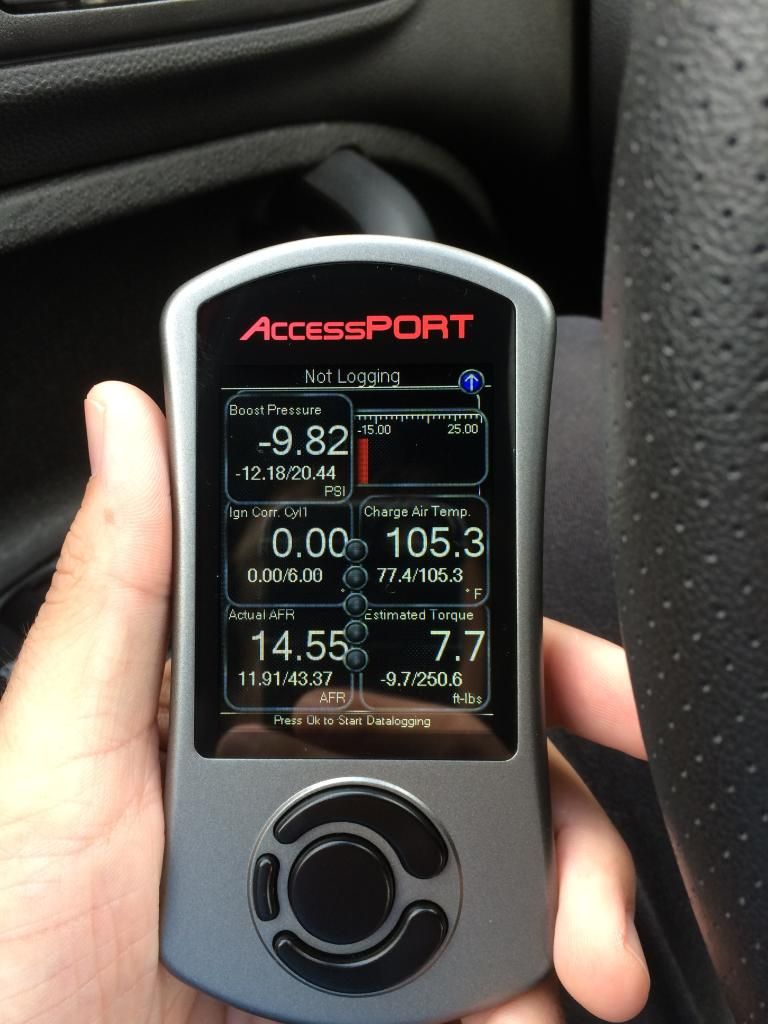This is a two stage question:
First, just how accurate is the torque read out on the AccessPort? Is it a reliable judge of performance increases as it pulls from the same parameters each time, it should have consistent results, regardless of accuracy, it should show at least a relationship if all other conditions are similar.
Second, I've heard the stock ecu targets torque rather than boost, and I've seen a bit of a wall in some cases of around 250ft/lbs. I can only assume it retains that trait when reflashed. I've also read that it limits torque in the lower gears to aid traction. My own use of the AP3 on a mostly stock car shows lower numbers the lower the gear. Is this actually limited or just a function of how the AP3 judges torque?

This is my most recent pull. I got to these torque numbers going down the interstate in 6th gear. Previously, I would hit 230ft/lbs in spirited driving (lots of WOT).
Just trying to get a reason for my findings. The car is an absolute blast and I know the gauges are no replacement for an actual dyno, it would just satisfy some curiosity.
Thanks to everyone who reads and responds.
First, just how accurate is the torque read out on the AccessPort? Is it a reliable judge of performance increases as it pulls from the same parameters each time, it should have consistent results, regardless of accuracy, it should show at least a relationship if all other conditions are similar.
Second, I've heard the stock ecu targets torque rather than boost, and I've seen a bit of a wall in some cases of around 250ft/lbs. I can only assume it retains that trait when reflashed. I've also read that it limits torque in the lower gears to aid traction. My own use of the AP3 on a mostly stock car shows lower numbers the lower the gear. Is this actually limited or just a function of how the AP3 judges torque?

This is my most recent pull. I got to these torque numbers going down the interstate in 6th gear. Previously, I would hit 230ft/lbs in spirited driving (lots of WOT).
Just trying to get a reason for my findings. The car is an absolute blast and I know the gauges are no replacement for an actual dyno, it would just satisfy some curiosity.
Thanks to everyone who reads and responds.
